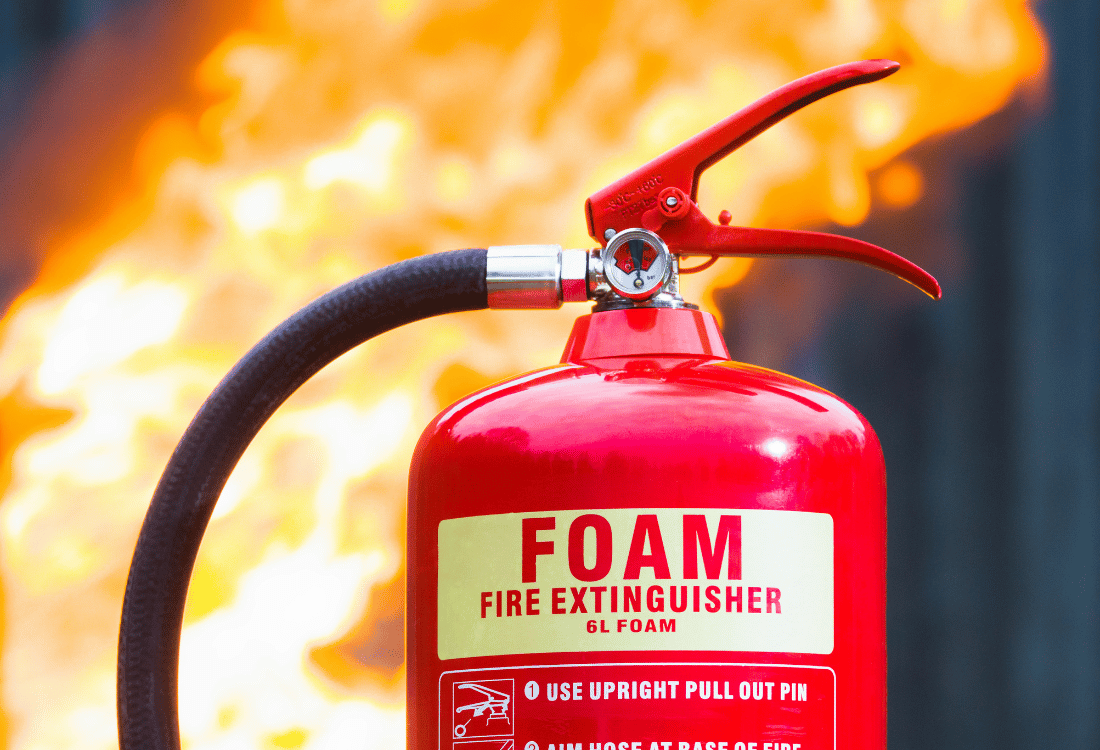
Foam Fire Extinguishers Are Being Phased Out: What You Need To Know
In a major change to fire safety and prevention practices for businesses across the UK, it is expected that Aqueous Film Forming Foam (AFFF) fire extinguishers are set to be phased out in the UK. Legislation slated for the current parliament is expected to prohibit the manufacture and sale of these extinguishers before 2026.
The anticipated ban is part of an ongoing phase-out of PFOA (Perfluorooctanoic Acid) from firefighting products, a potentially harmful chemical found in AFFF, among other products. Since January 2023, the use of extinguishing foam has been prohibited for fire suppression purposes if all released products cannot be contained – a stipulation that severely limits the use of such fire extinguishers in most commercial fires. This follows a similar ban across the EU that came into force at the same time.
Going back further, extinguishers using PFOA should have been removed from service by the end of 2022, unless it was known beyond doubt that the device had been subject to proper containment safeguards.
Are All Foam Fire Extinguishers Being Phased Out?
No. This stage of the phase-out is only likely to affect AFFF fire extinguishers, due to the presence of PFOA. However, a growing number of chemicals used in foam fire suppressants are now being regulated and/or phased out. For example, HFC (hydrofluorocarbons, e.g. Halon 1211) and PFC (perfluorocarbons) agents, once a mainstay of portable fire extinguishers, have been largely (but not totally) phased out in the UK since 2003, due to their environmental impact. Another chemical in the fluorine family, PFOS (perfluoroctane-sulphonic acid) has been prohibited since 2011.
So, while foam fire extinguishers aren’t being banned per se, it’s strongly possible that other chemical substances containing carbon-fluoride compounds will be placed under restrictions or bans in the coming years.
What Next? Alternative To AFFF Foam Extinguishers
As a first step, we strongly recommend checking your current fire extinguishers and any foam stock to see if it contains PFOA. If the compound contains more than 25 PPM (parts per million) of PFOA, then it falls under the current restrictions and will probably be phased out in the next couple of years – i.e. it can currently only be used for liquid fires and you must collect 100% of the used product.
There are also several currently legal alternatives to AFFF fire extinguishers available in the UK, such as extinguishers that use short-chain C6 fluoro-surfactants. For example, some AFFF foam extinguishers in current circulation use PFHxA, which is a shorter C6 chain PFAS (fluorine) with lower environmental impact, in place of PFOA, and may not be subject to the ban – which is why it’s important to check your stock.
Some fire protection suppliers also produce fluorine-free foam extinguishers, providing a safer and more compliant alternative to the current generation of AFFF extinguishers.
However, while legal chemical foam alternatives are available, it’s important to realise that the use of AFFF, FP, and FFFF firefighting agents is currently under global review, and regulations affecting other chemical suppressants should be expected in the near future. Our current advice is to avoid installing any new extinguisher containing fluorine compounds, in order to save costs down the line when you may have to remove them.
Find Out More
If you are concerned about the upcoming ban and would like to find out more about legally compliant and environmentally safe ways of combating the fire risk on your premises, please call one of the fire prevention specialists at Rhino today on +44 1278 422705.
Image Source: Canva



